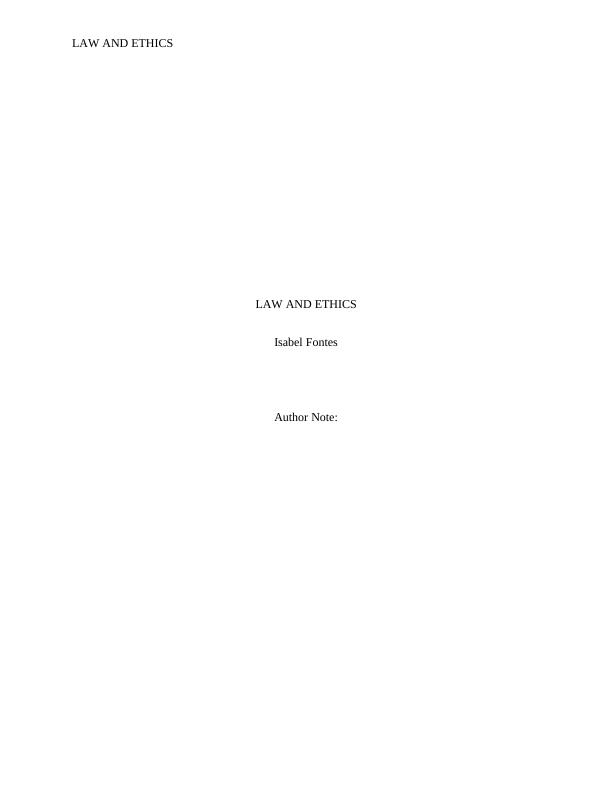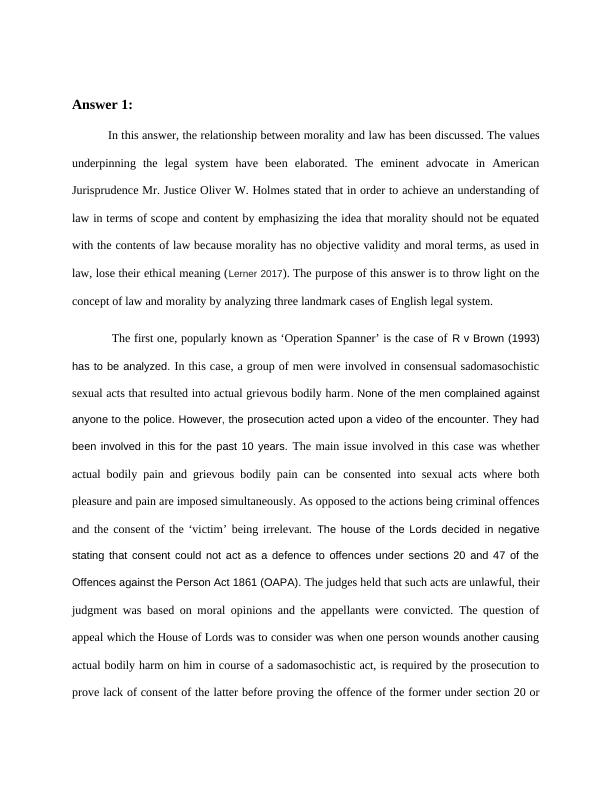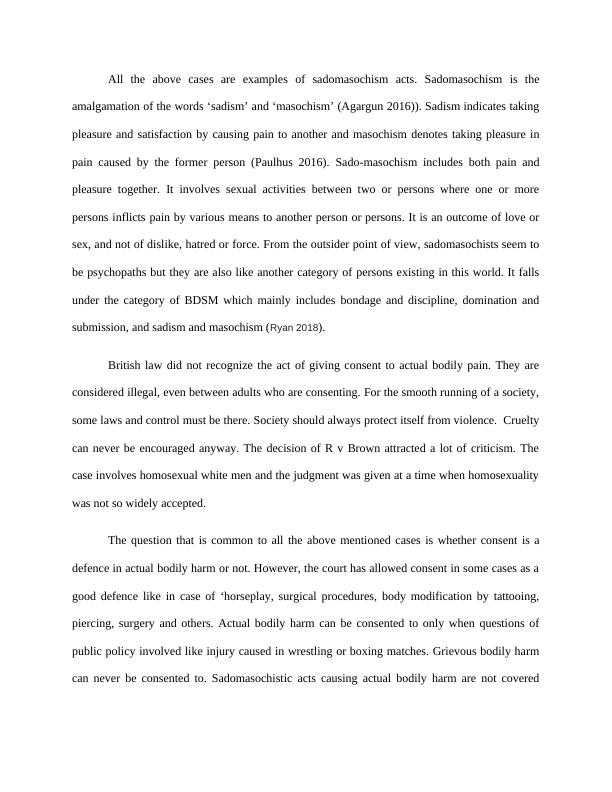Relationship Between Morality and Law: Analyzing Landmark Cases in English Legal System
Submit a Law and Ethics portfolio of tasks assessing learning outcomes related to the relationship between morality and law, values of the legal system, ethics of the judiciary and legal professions, and ethical responsibilities of lawyers.
13 Pages3509 Words334 Views
Added on 2023-04-05
About This Document
This article discusses the relationship between morality and law by analyzing three landmark cases in the English legal system. It explores the concept of consent in sadomasochistic acts and the role of morality in shaping legal decisions. The article also examines the professional roles and ethical responsibilities of lawyers in the UK legal system.
Relationship Between Morality and Law: Analyzing Landmark Cases in English Legal System
Submit a Law and Ethics portfolio of tasks assessing learning outcomes related to the relationship between morality and law, values of the legal system, ethics of the judiciary and legal professions, and ethical responsibilities of lawyers.
Added on 2023-04-05
ShareRelated Documents
End of preview
Want to access all the pages? Upload your documents or become a member.
Criminal Law - Sections 18 and 20 of the Offenses against a person act 1861
|3
|344
|17
Offence Against Person
|14
|3563
|212
Non-Fatal Offences and the Need for Reforms in the Offences Against the Person Act, 1861
|6
|1752
|301
Criminal Law: Murder and Manslaughter
|22
|4927
|392
Criminal Law: Murder and Defences
|12
|3002
|428
Shaw v. DPP: Problems in the Application of Rule of Law
|5
|768
|32




